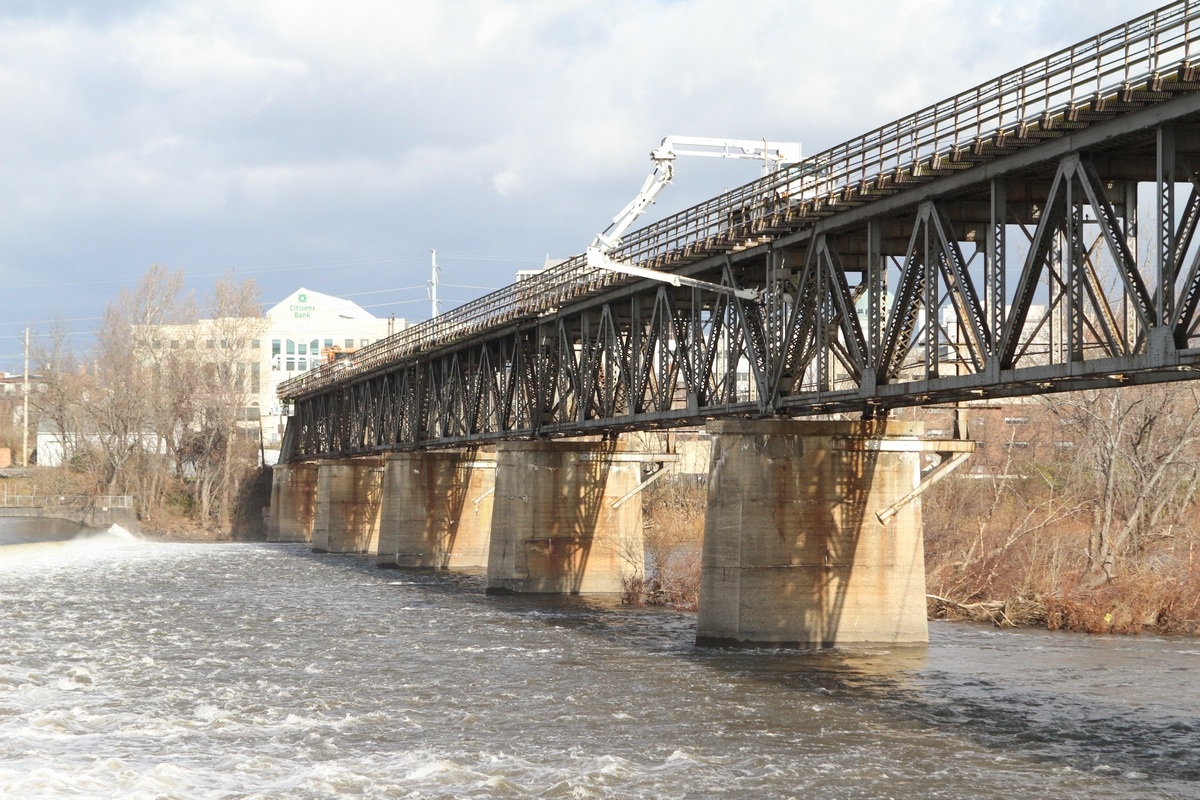SEPTA to close Bridgeport Viaduct, bus passengers during construction

Wear, deterioration and this summer’s high temperatures will force SEPTA to close the Bridgeport Viaduct – a vital Norristown High Speed Line (NHSL) bridge over the Schuylkill River. While the structure is being worked on, SEPTA will shuttle passengers by bus between Norristown Transportation Center and Bridgeport Station.
On July 8, SEPTA will close the viaduct for an estimated four months to allow for necessary timber replacement. During the closure, six shuttle buses will run during peak hours and three shuttle buses will run during off-peak hours. These buses will shuttle the 2,500 passengers who cross the bridge daily around the viaduct via area roads.
As PlanPhilly reported in January, SEPTA’s infrastructure network will shrink without increased capital funding. Though this closure is temporary, at least for now, this is one of the first instances of system shrinkage.
“It’s really one of the first situations where our problems with capital funding are catching up with us,” said Jeff Knueppel, SEPTA’s deputy general manager.
Critical timber replacement
The 3,000-foot-long Bridgeport Viaduct was built in 1911 and needs timber replacement, structural steel repairs and painting.
The timbers that hold the viaduct’s rails are attached directly to the steel beams, or girders. Because the timber conditions are so poor, SEPTA is concerned that when higher temperatures cause the rails and ties to expand, the wood will not be able to withstand that change.
Until recently, the viaduct was on SEPTA’s list of “critical deferred projects” because the authority could not afford to replace the timbers. To ensure safety and buy a little more time, SEPTA put a speed restriction and one-train-at-a-time limit on the structure about three months ago. Without additional funding, SEPTA reported then, the viaduct would have to be closed this summer, perhaps indefinitely.
Since then, thanks to a slight increase in federal MAP-21 funding, SEPTA has been able to secure just enough money to replace the timbers. This timber replacement project will buy SEPTA a couple years before the viaduct will have to be closed again for the steel work and painting. An estimated $30 million will be needed for that additional work, and once again SEPTA will shuttle passengers around the bridge.
Shuttling passengers, “is not an attractive proposal, and [it’s] something I would not want our customers to go through twice unless they had to, but given our funding constraints, we were fortunate to find the additional money to move ahead with the timber replacement,” said Rich Burnfield, SEPTA chief financial officer.
“It’s like putting a sign on your business, ‘Sorry, closed for repairs,’ and given that we have record ridership, that’s not any way for a business to operate,” Burnfield said.
State of good repair backlog
Despite moving this project forward, SEPTA’s state of good repair projects are still backlogged at about $4.7 billion.
At its current capital funding level, SEPTA spends about $200 million on state of good repair work annually. To get rid of that $4.7 billion backlog in 20 years, SEPTA would have to spend an average of just more than $650 million annually, Knueppel explained.
“The future of our organization really relies upon our ability to replace our assets going forward or we’re in a lot of trouble,” Knueppel said.
As SEPTA waits to hear more about future transportation funding at the state level, Burnfield is keeping a close eye on neighboring states like Maryland, Virginia and Ohio. Each of these states have either passed a transportation funding bill or their governor has signed it and the bill is far along in the process of being adopted, Burnfield said.
“I think all the states are looking to do something to address transportation, and Pennsylvania can’t fall behind,” Burnfield said.
WHYY is your source for fact-based, in-depth journalism and information. As a nonprofit organization, we rely on financial support from readers like you. Please give today.






